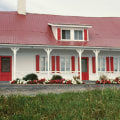Transition houses are transitional housing facilities for people recovering from drug addiction. People released from jails, prisons, or rehabilitation centers sometimes go to reintegration centers in residential neighborhoods to relearn life skills. Your decision to be part of this process helps keep communities safe by helping offenders learn to live responsibly so they don't offend again. This ambiguity means that it is almost impossible to determine how many people are in transitional houses each day, and how many state-specifically funded transitional houses there are.
Somehow, it's easy to understand why people confuse the difference between a sober life and a transitional home. Apartment units may be allowed above the ground floor, at the back or side of the local convenience store; and (ii) institutional and community uses serving the neighborhood, with the exception of transitional houses and other forms of special needs housing that accommodate more than 8 occupants ( not including staff). Just as there is a difference between a sober living and a transitional home, there are also significant differences between sober living houses. Today, many still house recently released offenders or are used as a solution to homelessness, while other transitional centers are dedicated to housing people who have recently completed addiction treatment.
Both sober and transitional homes can provide the support and community needed by people working in sobriety. Some people can also go to transition centers without it being necessary, simply because the center provides housing. Now, as people return to work, transition centers are positioned to be vectors of the virus, as the lack of social distancing and adequate living spaces is exacerbated by the frequency with which people have contact with the wider community. Contrary to the belief that transition centers are providers of support services, most transition centers are an extension of the prison experience, complete with vigilance, onerous restrictions and intense scrutiny.
Transition homes can be crowded and be like bedrooms, while sober living homes are structured more like a private residence, giving residents more privacy and comfort. While there are certain similarities between the two classifications, there are clear differences between the sober house and the transitional house. Even basic statistics, such as the number of transitional houses in the country or the number of people living in them, are difficult or impossible to find. Transition houses date back to 18th century England, when they were opened to house children who had committed crimes.
This lack of guidance and oversight has ensured that people in transition centers do not receive help to rebuild their lives safely and effectively after serving time in jails and prisons.


